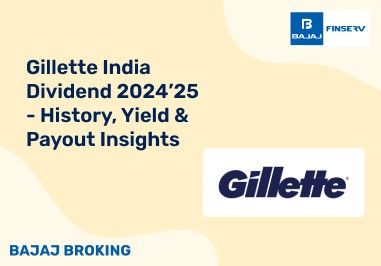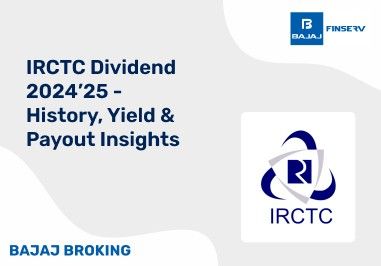BAJAJ BROKING
Tankup Engineers IPO is Open!
Open a Free Demat Account
Trade Now, Pay Later with up to 4x
Track Market Movers Instantly
What is a Daily Margin Statement and How to Read it?
Synopsis:
A daily margin statement provides traders with information about how much trading margin is available in their account on a particular day.
For anyone who has just opened their trading account, it is necessary to understand the meaning of a ‘daily margin statement’. In simple words, a daily margin statement provides a trader with important information about how much trading margin is available in his account on a particular day.
But before we get deeper into a daily margin statement, let us understand the concept of ‘margin trading’. Margin trading allows traders to borrow money from their stockbroker to buy stocks. By doing this, traders can buy more than what their funds allow them to do. That being said, it is the regulator, the Securities and Exchange Board of India (SEBI), which recommends and enforces margin requirements. The idea is to ensure seamless trading in the stock market.
If you are a trader who is actively involved in margin trading, then a daily margin statement is very important for you. This statement keeps you aware of the status of your margin. Making you aware of this status, ensures that you do not face issues, such as a shortfall in margin or penalties for not maintaining an adequate margin.
Understanding a Daily Margin Statement
There are two parts to a daily margin statement. The first part talks about the fee imposed by the stock exchanges in the form of margin money for each trade executed by you. In case, you do not have sufficient funds for your trades, then the second part of this statement comes into the picture. When you do not have enough funds for your trades, you have to pledge securities with your stockbroker in order to get a margin on those securities.
Understanding the Two Parts of a Daily Margin Statement
Margin money imposed by the stock exchanges: The SEBI requires brokers to collect a margin from all traders and investors in the cash market. The regulator does this to ensure seamless settlement of orders. If an investor does not have a sufficient margin, then there will be issues in getting his orders executed. This is why SEBI has made this rule.
Margin provided by a broker: At times, brokers provide a facility called a ‘margin trading facility’. Under this, a trader or investor can borrow money from his broker against capital or margin in his trading account. If a trader purchases shares using this facility, such shares are pledged with his broker and the trader pays interest on the money he has borrowed from the broker.
How to Read a Daily Margin Statement?
A daily margin statement provides information under several heads; some of the most important heads are explained below:
Date of trading: This head talks about the dates on which a trader or investor has executed the transactions.
Available funds: A trading account may have unutilised funds. If that is the case, such an amount will be shown under ‘available funds’.
Margin utilised by pledging shares: In case a trader or investor has utilised margin by pledging his shares, then those details are shown here.
Margin from other sources: Apart from stockbrokers, there are other ways to access margin as well. When a trader sells his stocks on a particular day, 80% of that value is deemed as the available margin for trades in the future.
Total margin that can be utilised: The total margin a trader can use for his trades is shown under this head. This is arrived at by adding: (a) the funds in a trader’s account, (b) the margin he has availed after pledging his stocks, and (c) the margin from other sources.
Margin needed: The margin that is required by a stock exchange for a trade is shown here. The total margin needed includes ‘value at risk margin’, ‘mark to market margin’, and ‘extreme loss margin’.
Apart from these heads, there are a few other types of information in a daily margin statement as well, including the actual margin collected by a stockbroker, whether the collected margin exceeds the margin needed or not, and the penalty imposed in the case of a shortfall in the margin. Understanding how to read a daily margin statement can be very important while deploying stock buying or options trading strategies.
Disclaimer: Investments in the securities market are subject to market risk, read all related documents carefully before investing.
This content is for educational purposes only. Securities quoted are exemplary and not recommendatory.
For All Disclaimers Click Here: https://bit.ly/3Tcsfuc
Share this article:
Read More Blogs
Disclaimer :
The information on this website is provided on "AS IS" basis. Bajaj Broking (BFSL) does not warrant the accuracy of the information given herein, either expressly or impliedly, for any particular purpose and expressly disclaims any warranties of merchantability or suitability for any particular purpose. While BFSL strives to ensure accuracy, it does not guarantee the completeness, reliability, or timeliness of the information. Users are advised to independently verify details and stay updated with any changes.
The information provided on this website is for general informational purposes only and is subject to change without prior notice. BFSL shall not be responsible for any consequences arising from reliance on the information provided herein and shall not be held responsible for all or any actions that may subsequently result in any loss, damage and or liability. Interest rates, fees, and charges etc., are revised from time to time, for the latest details please refer to our Pricing page.
Neither the information, nor any opinion contained in this website constitutes a solicitation or offer by BFSL or its affiliates to buy or sell any securities, futures, options or other financial instruments or provide any investment advice or service.
BFSL is acting as distributor for non-broking products/ services such as IPO, Mutual Fund, Insurance, PMS, and NPS. These are not Exchange Traded Products. For more details on risk factors, terms and conditions please read the sales brochure carefully before investing.
Investments in the securities market are subject to market risk, read all related documents carefully before investing. This content is for educational purposes only. Securities quoted are exemplary and not recommendatory.
For more disclaimer, check here : https://www.bajajbroking.in/disclaimer
Our Secure Trading Platforms
Level up your stock market experience: Download the Bajaj Broking App for effortless investing and trading













